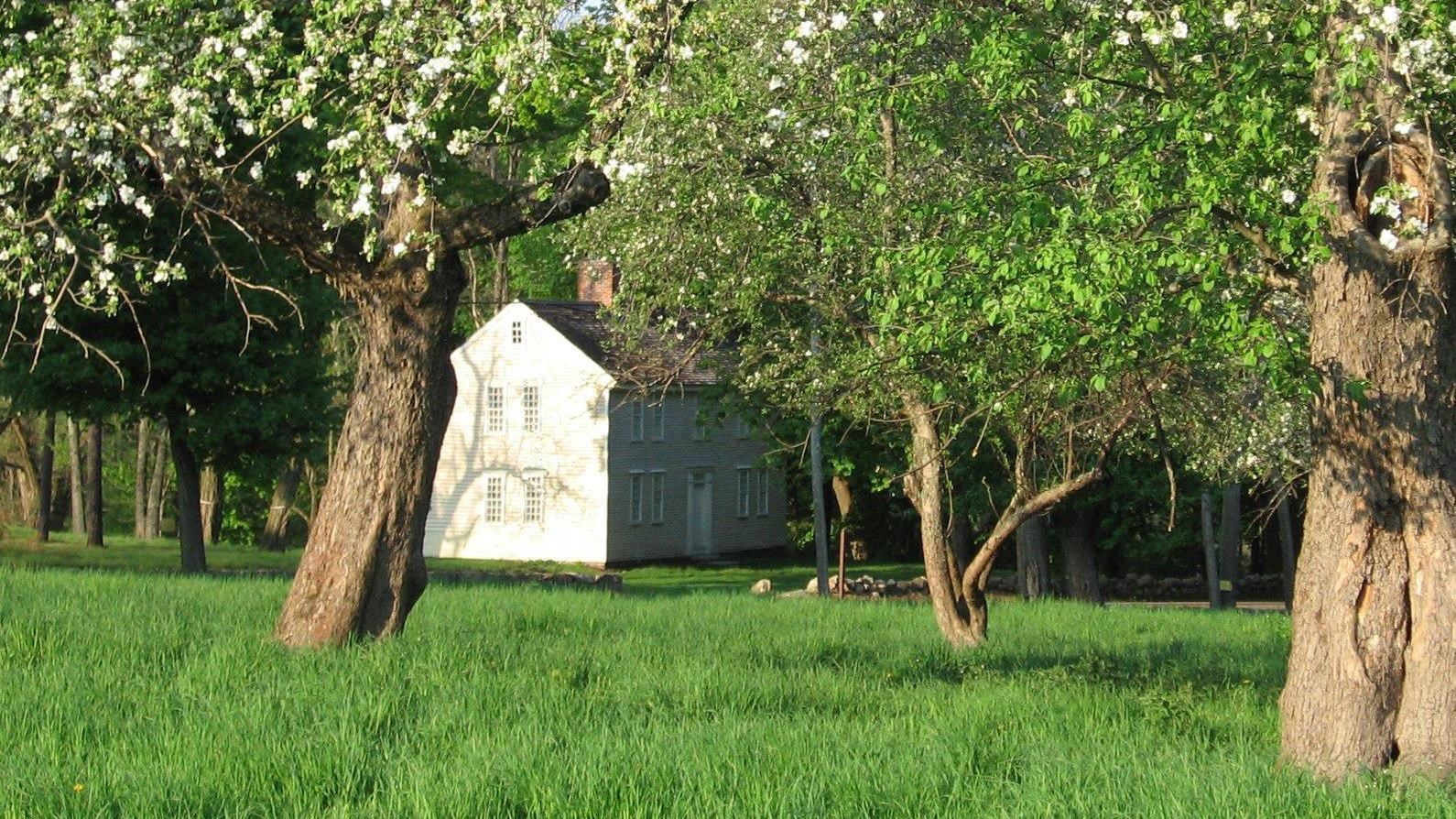Last updated: January 18, 2023
Place
Job Brooks House, 1740

Lou Sideris
Quick Facts
Location:
1265 Lexington Road, Concord MA 01742
Significance:
The Job Brooks House sits on the Bay Road. On April 19, 1775 the British regulars marched past here on their way to Concord, then back again during their fighting retreat to Boston. An intense skirmish took place just yards from this house at Elm Brook Hill.
OPEN TO PUBLIC:
No
Amenities
1 listed
Historical/Interpretive Information/Exhibits
In 1740, Hugh Brooks gave land to his son Job, possibly as a wedding present on his marriage to Anna Bridge of Lexington. The present house was built by Job at that time, and quickly filled as their children Mathew, Asa, and Anna were born. Job’s widowed mother joined the household in 1747, and lived with them until her death in 1761. Mathew married and moved to Littleton in 1766. By 1775, the household consisted of Job and Anna, both in their fifties, their daughter Anna (age 25), who married about a week after the events on April 19; and their son Asa and his wife Ruth, both 29. Job died in 1794, leaving the farm to Asa, who finally began to have children at the age of 52 with his third wife, Mary Lawrence. The farm remained in the Brooks family until 1850. Subsequent owners continued to farm the land until 1959, when it was purchased by Minute Man National Historical Park.
The farm that Job Brooks owned was 24 acres, slightly below the average size for his
neighborhood. According to local tax records, the farm produced corn, hay, flax (for making linen), oats, and apples. Livestock included oxen, horses, pigs, and occasionally sheep, but the largest amount of livestock were cattle, as many as sixteen in the 1770s, when Job and Asa were running the farm together. Farming in New England involved periods of intense activity. There was plowing and planting in the spring, harvesting in the fall, and times when there was little else to do than feed the livestock. Most farming families also had an occupation to earn extra money during the slower months. For Job and many of his neighbors, the tannery run by his cousin Joshua provided employment. Job was a currier for the tannery. This was a skilled occupation. Curriers finished the tanned
leather by stretching, oiling, and polishing it with a stone.
When the regulars were sent out from Boston on the morning of April 19, 1775, they followed the Bay Road to Concord. This route took them through the center of Brooks Village. If any of the families were still in their houses when the regulars marched by at about 6:00 AM, they would have seen the soldiers “marching in fine order,” their bayonets “glistening in the sunlight like a field of waving grain,” as one witness later described it. By 1:00 that afternoon, the regulars were passing by again on their way back to Boston after the engagement at Meriam’s Corner. Loammi Baldwin of the Woburn Militia later reported
Woburn rested upon Brooks Hill until they saw the regulars approaching. Baldwin then moved his men into a wooded area just east of Job Brooks’ house where the Bay Road took a sharp turn. As the regulars reached what is now known as Bloody Angle, they were caught in a heavy crossfire from Baldwin’s men on the east, and troops from several other towns who had crossed Joshua Brooks’ tannery field on the west. Eight British soldiers and three Americans died, and many others were wounded at the edge of Brooks Village that day.
At the age of 58 in 1775, Job Brooks was almost too old to be required to join the militia, but his 30-year-old son Asa would have still been drilling regularly. Unfortunately, the records of the Concord militia companies are incomplete for April 19, so we do not know if Job or his son turned out that day. Asa, however, does appear in the records as a sergeant in Captain George Minot’s Militia Company in 1776 and 1778.
Today, the Job Brooks House serves as a storage facility for Minute Man National Historical Park’s archaeological collection of more than a quarter-million artifacts from the early Archaic period (about 10,000 years ago) through the 20th century.
